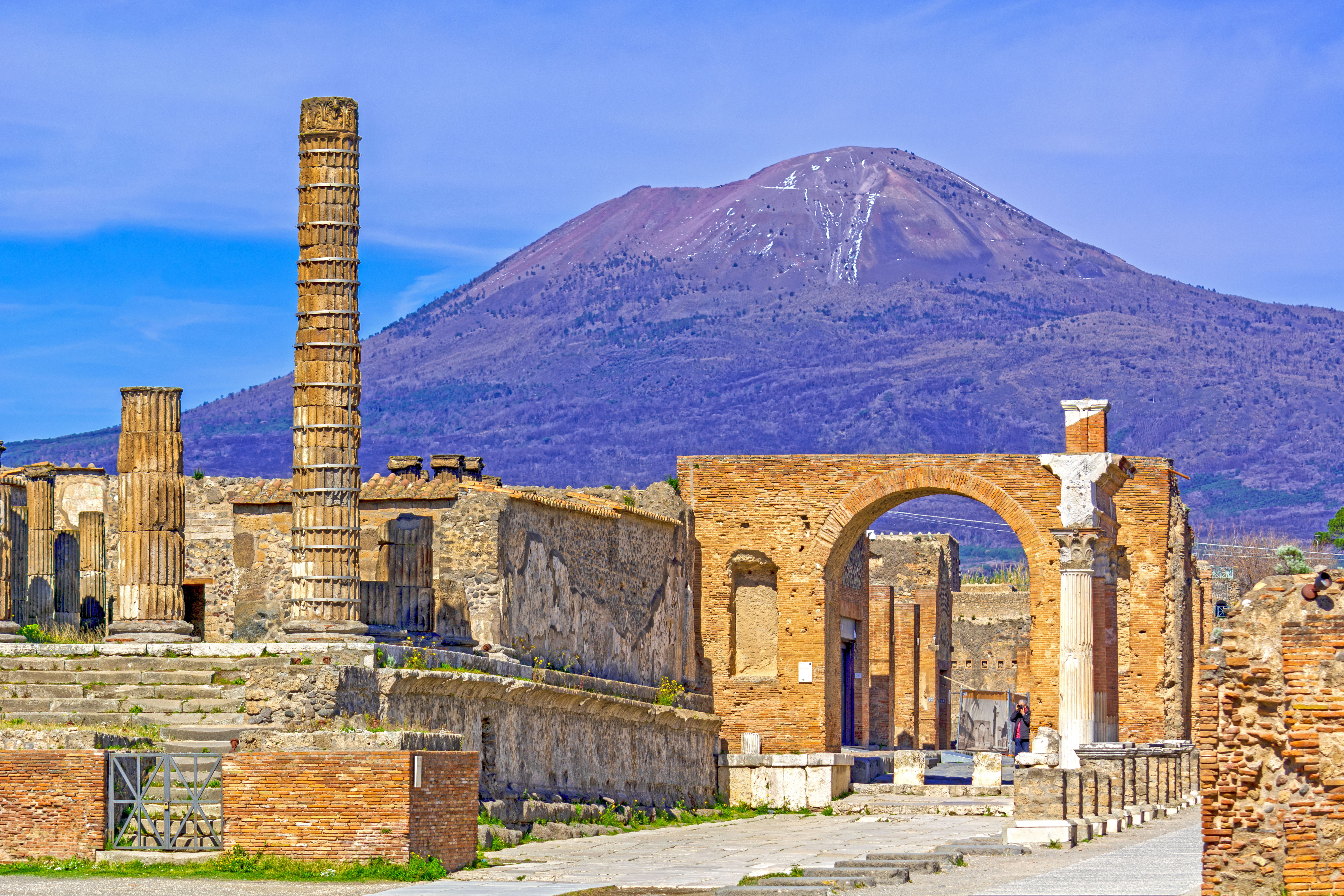pompei
Pompeii’s origins date back to the 7th or 6th century BC, when it was established by the Oscans, an Italic people. Over time, it came under the influence of the Greeks, Etruscans, and eventually the Romans, who transformed it into a prosperous city.
By the 1st century AD, Pompeii was a vibrant commercial and cultural hub, boasting luxurious villas, bustling markets, theaters, and public baths. However, on August 24, 79 AD, Mount Vesuvius erupted, spewing ash and pumice that covered the city. The sudden burial preserved Pompeii remarkably well, freezing its streets, buildings, and even its inhabitants in time. Rediscovered in the 18th century, Pompeii has since become an invaluable archaeological treasure.
What to Visit in Pompeii
1. The Forum The political, economic, and religious heart of ancient Pompeii, the Forum is surrounded by significant structures, including temples, public buildings, and markets.
2. The Amphitheater Built around 80 BC, this is one of the oldest Roman amphitheaters and could hold up to 20,000 spectators. It hosted gladiatorial games and public spectacles.
3. The House of the Faun One of Pompeii’s largest and most luxurious residences, the House of the Faun is famous for its intricate mosaics, including the stunning “Alexander Mosaic,” depicting Alexander the Great.
4. The Villa of the Mysteries (Villa dei Misteri) Located just outside the city walls, this well-preserved villa is renowned for its vibrant frescoes, which depict mysterious rituals, likely related to the cult of Dionysus.
5. The Baths (Terme)Pompeii’s public baths, such as the Stabian Baths, are excellent examples of Roman engineering and social life, featuring heating systems, mosaics, and decorative stucco.
6. The Lupanar This ancient brothel provides a glimpse into Pompeii’s more private aspects of life. The site includes erotic frescoes and inscriptions by visitors.
7. The Garden of the Fugitives This poignant area displays plaster casts of victims who perished during the eruption, capturing their final moments.
8. The Streets of Pompeii Walk along Pompeii’s ancient streets to see preserved homes, shops, and even ruts left by Roman carts. Look for the stepping stones used to cross streets during rainy weather.
9. The Temple of Apollo and Temple of Jupiter These sacred spaces highlight the religious life of Pompeii, with remnants of statues, altars, and columns.
Tips for Visiting Pompei

We recommend all our customers to book the Private Guide, you can book it with us.